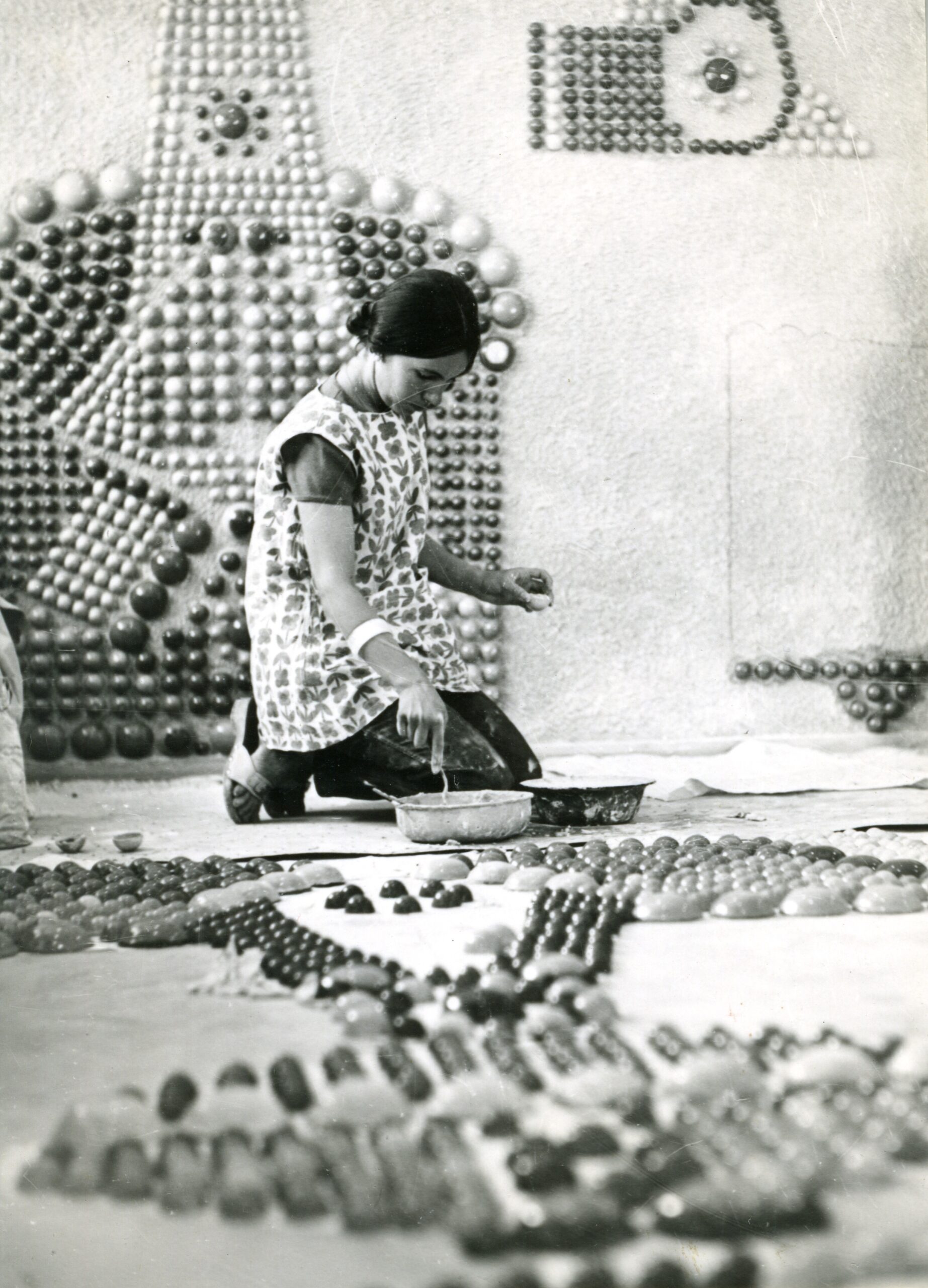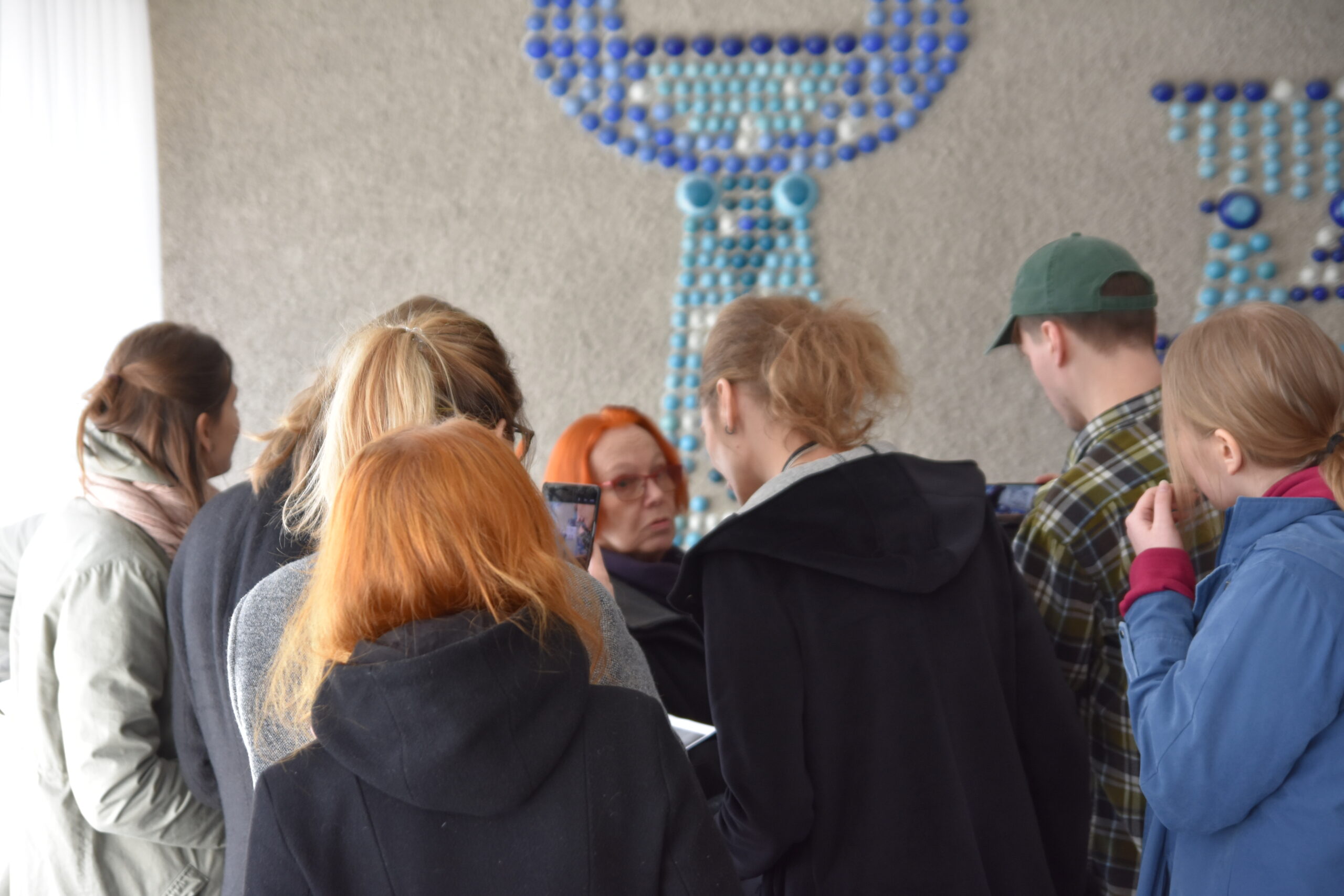Talitajanaised ja linnud (“Farmer Ladies and Birds”) in the Administrative and Research Centre for the Kurtna Experimental Poultry Farm
Year of completion: 1967
Address: Harju County, Kurtna, Keskuse tee 12
Author Anu Rank-Soans
Clay, enamel, white cement
272 x 335 cm
The building with its preserved original interior is an architectural monument (no. 24 652)
The stylish modernist wall pannel by known Estonian ceramist Anu Rank-Soans was finished in 1967 in the former main building of the Administrative and Research Centre for the Kurtna Experimental Poultry Farm designed by Valve Pormeister. At the time, the Centre was a modern research institution that bred chicken and geese, and the rooms of which included laboratories, cabinets for the employees, conference halls, archive rooms, and guest rooms. The well-off institution could afford deficit and high-quality foreign materials (Finnish toilet bowls, Hungarian telephones). In addition to that, the interior architects Vello Asi and Väino Tamm had taken into account commissioning artworks. At the time of creation, the author of the piece was only 26 years old, and the piece became her final project at the Estonian Academy of Arts.
In 2019, students of the cultural heritage and conservation department at the Estonian Academy of Arts did restoration work on the piece under the supervision of instructors Hilkka Hiiop, Varje Õunapuu and Taavi Tiidor. At the beginning of their student traineeship, an interview was done with Anu Rank-Soans to explore the background of the creation process, used materials, and techniques of the piece created half a century prior. The conversation revealed that the pannel originally consists of 3600 egg-shaped hand-sculpted glazed clay elements. The artist’s goal was to create an abstract piece that drew inspiration from the building’s function – the different-sized eggs in various colours form two female figures (research poultry keepers), which in turn comprise tens of birds.
During the restauration work, traces of former dilettante corrections were removed and a majority of the missing ceramic elements were replaced with original details that the artist herself had kept. By the beginning of the restauration, 229 ceramic eggs had gone missing, and most of the missing details could be replaced with the production surplus kept by the artist. The various sizes and tones of the elements were decisive in the piece’s overall image, which made the placing of hundreds of replacement details a fun puzzle game. The broken and missing elements that could not have been replaced with originals were modelled out of plaster, and suitable colour tones were restored with pigments. Upon closer inspection, the spectators now have the opportunity to find details created by the conservators.
Hilkka Hiiop, Varje Õunapuu









